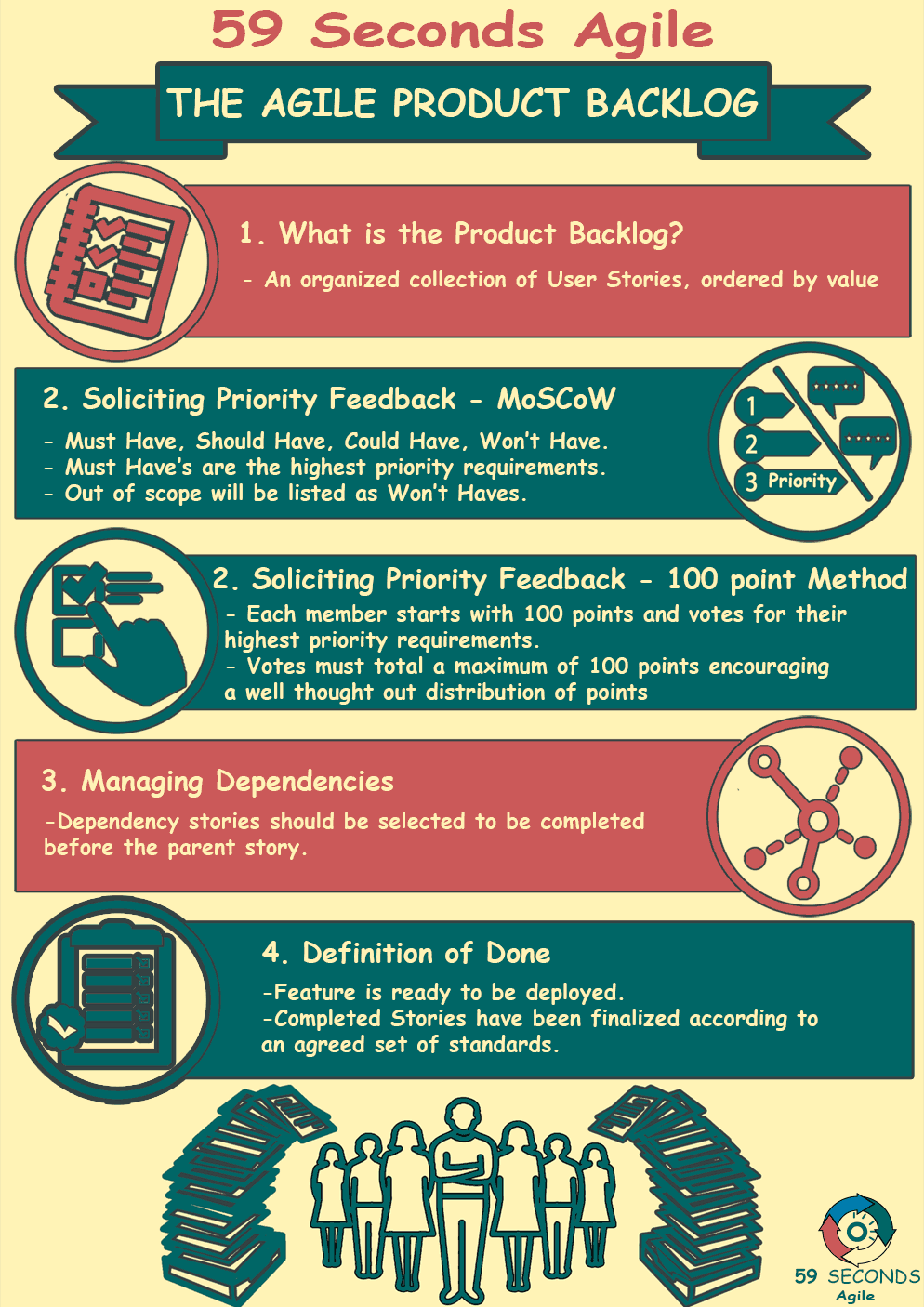
The Agile Product Backlog for Scrum Masters – Part 2
How to Solicit Feedback about Priority
As an illustration, if there are 20 requirements and 100 points one team member could use the following schema to vote:
● For their top 5 priorities, they assign 8 points each to equal 40
● For their 6th – 10th priority items, they assign 6 points each to equal 30
● For their 11th to 15th priority items, they assign 4 points each to equal 20
● For their bottom 5 priorities, they assign 2 points each to equal 10
In total, they have allocated all 100 points.
By the end of the exercise, each requirement receives a score that is the tally of all votes and can be ordered by that score.

Managing Dependencies
By default, all stories that are known to be dependencies of other features will be given the same priority as the parent story they are required for. These dependency stories should be selected to be completed before the parent story is required to be completed. Sometimes this work may be assigned outside the core team; as is the case when a 3rd party vendor is doing development. Regardless of who is assigned to the tasks, if there is a delay in the delivery, especially if it is needed for another task, the Scrum Master will need to step in to investigate and do what they can to move the development forward.
Definition of Done
At the end of a Sprint cycle, a decision must be made as to whether a feature is ready to be deployed. The decision is made by determining if there are any remaining tasks in the Sprint Backlog and if the completed Stories have been finalized according to an agreed set of standards. These standards are known as the Definition of Done and can vary slightly from one project to another. The types of criteria it can specify, include:
● Must be developed with Paired Programming (where code must be reviewed by a 2nd developer).
● A definition of what Properly Tested means (For example, all previous regression tests have passed, regression tests for new functionality will run with future builds, a manual exploratory test has been conducted, etc.)
● The code has been Refactored (Code has been cleaned up and is not messy/poorly designed and any duplicate code has been removed)
● Functionality could be deployed and used if needed (without requiring any further changes)
Our Favourite Agile Books
We found these books great for finding out more information on Agile Scrum:
The Product Owner usually has the final say on whether the Sprint is ready for release; but, if a sprint release ends up being delayed and there are tasks left unfinished this is a problem for the Scrum Master who will want to avoid allowing the pattern to continue. During the next Sprint Planning Meeting, it will be something they will need to address.

